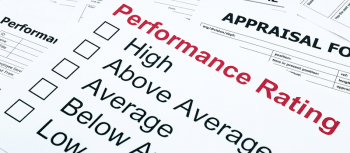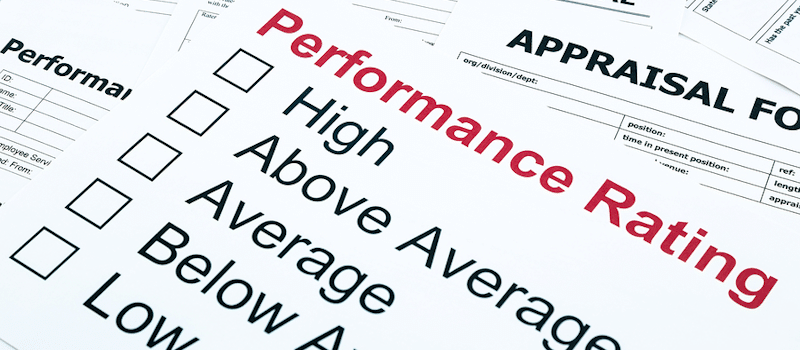Content originally published on data180.com. Learn more about Interfolio’s acquisition of Data180 here.

Evaluations and assessments of faculty are a fixture of university life. Faculty members are evaluated for many reasons: annual review, tenure, and promotion, to name a few. Faculty members also participate in these processes from both sides: being evaluated, and being evaluators of other faculty. It is in the best interest of faculty and administrators for these processes to be as efficient and streamlined as possible, without compromising the faculty members’ ability to appropriately present themselves and their achievements.
More often than not, streamlining and efficiency are enhanced by moving the process online, for example, to an electronic process. But is this movement to electronic evaluations being thought through as carefully as it should be? Below is some analysis and insight to benefit those looking at these processes.
Faculty evaluations are a part of a process or workflow, and the following are the core components of this process:
- A collection of documents and documentation (almost always prepared by the faculty member) is submitted along with a faculty member’s “self-evaluation” (i.e. a document often summarizing and/or highlighting their documented accomplishments).
- Evaluators appropriate to the given process are selected. These could be peer faculty on a tenure committee, a department chair, a dean, or even an outside evaluator.
- The documentation is presented to the evaluator(s) for review.
- The evaluator(s) responds with appropriate feedback and/or a decision.
- Faculty may or may not be allowed to respond to the feedback and decision of the evaluator(s).
This process is repeated for every faculty member under review in the process and for every stage of a multi-step process. What is presented above is, of course, just a simplification of the process, and there are many subtleties that can be very important and will differ significantly for each type of evaluation.
For instance:
- Will each stage of the process show the same documentation to each set of evaluators? For example, would an outside reviewer in the tenure process see the same documents that the faculty member’s department chair sees?
- Will the faculty member be able to alter or improve the documentation at any point as it progresses through the multiple stages, or are the documents essentially locked? If the documents are locked, at what stage are they locked?
- Are there limits to the amount of documentation allowed? For example, for those still dealing with paper-based evaluations, there might be specifications on the size and number of all of the “binders” a faculty member can submit for tenure.
How must the documentation and associated evaluations be preserved after the evaluation has ended? - Will the results of this evaluation be used in further evaluations steps within the process, or in other evaluation processes?
- Are faculty allowed to respond to, or even see, the output of all, or any, stages of the evaluation?
Many universities have worked hard to streamline evaluation processes by moving elements of them, or the entire process, online to an electronic format. There are certainly success stories for this; however, because of the many and varied subtleties underlying each different type of evaluation, very few schools have successfully implemented a single working evaluation system that can handle all their faculty evaluation needs. This means that there are likely separate systems for tenure and for annual performance reviews – not to mention other evaluation processes, like faculty awards (e.g. researcher of the year), applications for sabbatical leave, peer mentoring for new faculty, and so on.
So where does all of this leave those participating in these processes? Faculty and administrators serving as evaluators have to learn and use different systems for different evaluations. What if the results of one evaluation (such as interim reviews of tenure-track faculty members) must feed into other evaluations (the tenure decision for those same faculty members)? If different systems are being used, how does the data move between them?
And what about the poor faculty member who is responsible for preparing the documentation for each of these different and varied processes? If, for example, the peer and chair interim reviews of their progress are completed as a paper-based system, but the university has implemented an electronic tenure review system, how does the faculty member put it all together electronically, in the end, for their electronic tenure portfolio?
Further, if the faculty member takes the time to build an outstanding electronic portfolio to submit for the electronic tenure decision process (and why wouldn’t they, their entire future at the institution is at stake), is all of that electronic data (now locked up, in what is possibly, a one-use system solely for tenure) valuable for future evaluations such as promotions, awards nominations, or applications for sabbaticals?
These are some of the key factors that should be taken into account when thinking about moving to, or planning for, an online version of an evaluation process. The key point is to be sure that the online tool, and the data/documentation that are a part of the process, have broader value for both the faculty member and the evaluator outside of use in a single evaluation process.
Content originally published on data180.com. Learn more about Interfolio’s acquisition of Data180 here.

